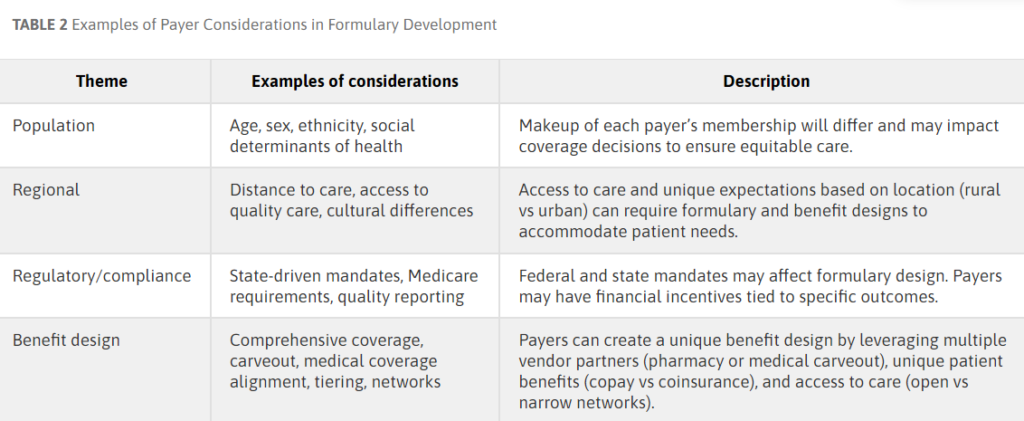Hydery and Reddy (2024) provide a nice primer on drug formularies. Below is a quick overview.
What is a formulary?
A formulary is a continually updated list of medications, products, and technologies supported by current evidence-based medicine, as well as the judgment of physicians, pharmacists, and other relevant experts in the diagnosis and treatment of disease and preservation of health. Formularies generally share an overarching goal to provide access to appropriate therapy while promoting effective resource utilization, which allows the managed care pharmacy organization to operate sustainably
What types of formulary structures are there?
Closed formularies are formulary where excluded products are not covered. Open formularies provide coverage for all products available; however, the trade-off is higher costs to the payer and potentially the member. Tiered formularies, patient out-of-pocket costs depend on in which tier a specific product is categorized. Therefore, patients are incentivized to use lower-tier medication via a lower copayment. Value-based formularies assess product value primarily using cost-effectiveness analysis, assigning products with a high assessed value (low incremental cost-effectiveness ratio) to lower copayments and products with a low assessed value (high incremental cost-effectiveness ratio) to higher copayments.
What considerations do payers take into account when developing a formulary?

What are key trends to consider in formulary development?
Some key issues include the rise in the approval and launch of biosimilars, prescription digital therapeutics, and the increasing emphasis on health equity.











